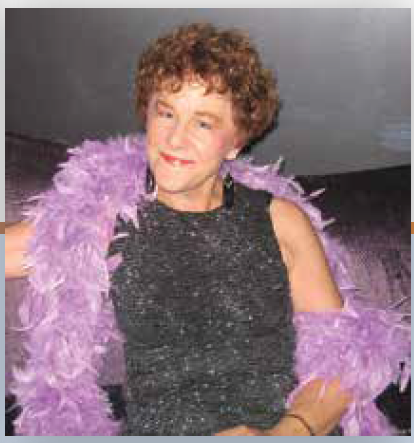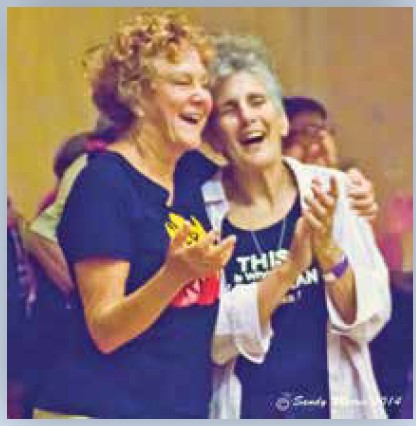By Janet Rachel–
Growing up with the values of the 1940s & 1950s in white, segregated middle-class neighborhoods, I wasn’t prepared for the shock, anxiety, fear, or relief of coming out as a lesbian. We learned to model our futures after the TV shows Father Knows Best and Leave It to Beaver, which held that you better not wear green on Thursday or people would call you a fairy, that our gym teacher met with other female gym teachers in secret, and that girls go to college for a “Mrs. degree,” only majoring in teaching, social work, or nursing.

Lesbian novels were full of heartbreak and suicide. I fit in because I was feminine (ironically, that became a problem later) and dated boys. My crushes on girls were a phase of immaturity that would pass, right? After college I married a good man and had an amazing son. But change was in the air.
The first coming out was to myself. We lived a happy hippie life in the 60s, until I met a few lesbians through our lesbian roommate and gay brother (yes, it can run in families … aunts, uncles, cousins too), and I was totally intrigued by these women. Then I fell in love with the roommate. My second coming out was summoning up the courage to tell my husband, and being relieved that he was supportive. Next was telling the roommate, which was terrifying. She was surprised but open to trying a relationship with me in our hippie family. But, in the end, I realized I was a lesbian and not Bi, so there went our happy hippie family.

Next was telling my parents. Although there was pain involved for everyone, they became supportive. Mom wanted me to be happy, but was scared I was headed for a very hard life … still a common reaction of parents today. Those tear-jerky lesbian novels! Dad would ask, “How did you and your brother become homosexual when your mother and I are so het-row?” For Christmas, I gave my mom the book Lesbian Woman by Phyllis Lyon and Del Martin. There was no PFLAG in those days, no internet, and library books were few and mostly supportive of old values and thinking. It was my opportunity to educate them, although I didn’t feel strongly about that then. With gratitude, we all got through it with love. The final coming out was yet to come, and not where you’d think.
The women’s movement and a women’s studies class did a lot to boost my self-discovery. After attending a feminist and mostly lesbian camp in Northern California, I grabbed my son and girlfriend, moved to the Bay Area, and never looked back! I was inspired by leaders like Del, Phyllis, the Daughters of Bilitis, Sally Gearhart, and others. The first lesbian bar I went to was Maud’s, with many more to follow.
One day, a friend showed me the album Lavender Jane Loves Women by Alix Dobkin and Kay Gardner. I was blown away that a record (vinyl, of course) about lesbians would be produced, pressed, and distributed, all by women! My heart was thrilled by my life-long passions of music and theater opportunities in the lesbian community. The East Bay dyke community became a second family, and it was the first time I had friends of color. We formed a child care collective, went to the first Pride parade in 1972, learned feminist ideology, acted on stage, sang & danced. I am forever grateful to those women. And, in time, my last coming out was in the dyke community itself.

When I first moved to the Bay Area, there was a code of dress and appearance. I had hippie hair that I kept long, rebelling against the pressure to have short butch-looking hair. As much as I understood actions against what men wanted us to look like, I wanted to wear femmy clothes sometimes, but felt I didn’t dare. The uniform was work shirts, jeans, overalls, plaid shirts. My hair got short eventually but I got braver about girly clothes. I still have and love plaid shirts and jeans too!
I’m grateful to my theatrical friends and to the social group Femme to Femme in the 1990s for giving strength and support to my identity. I’ve been with my precious wife Joan for 21 years. She embraces me in all the ways that I am.
Janet Rachel is a vocalist with the band Ruby’s in Town and was a founding member of Out on a Clef. Her musical theater work includes a lead role in “Dykes on Broadway,” and she was a member of numerous jazz ensembles including the Note-orious jazz sextet and the Jazz City Singers.
https://www.rubysintown.com/
Published on June 24, 2021





Recent Comments